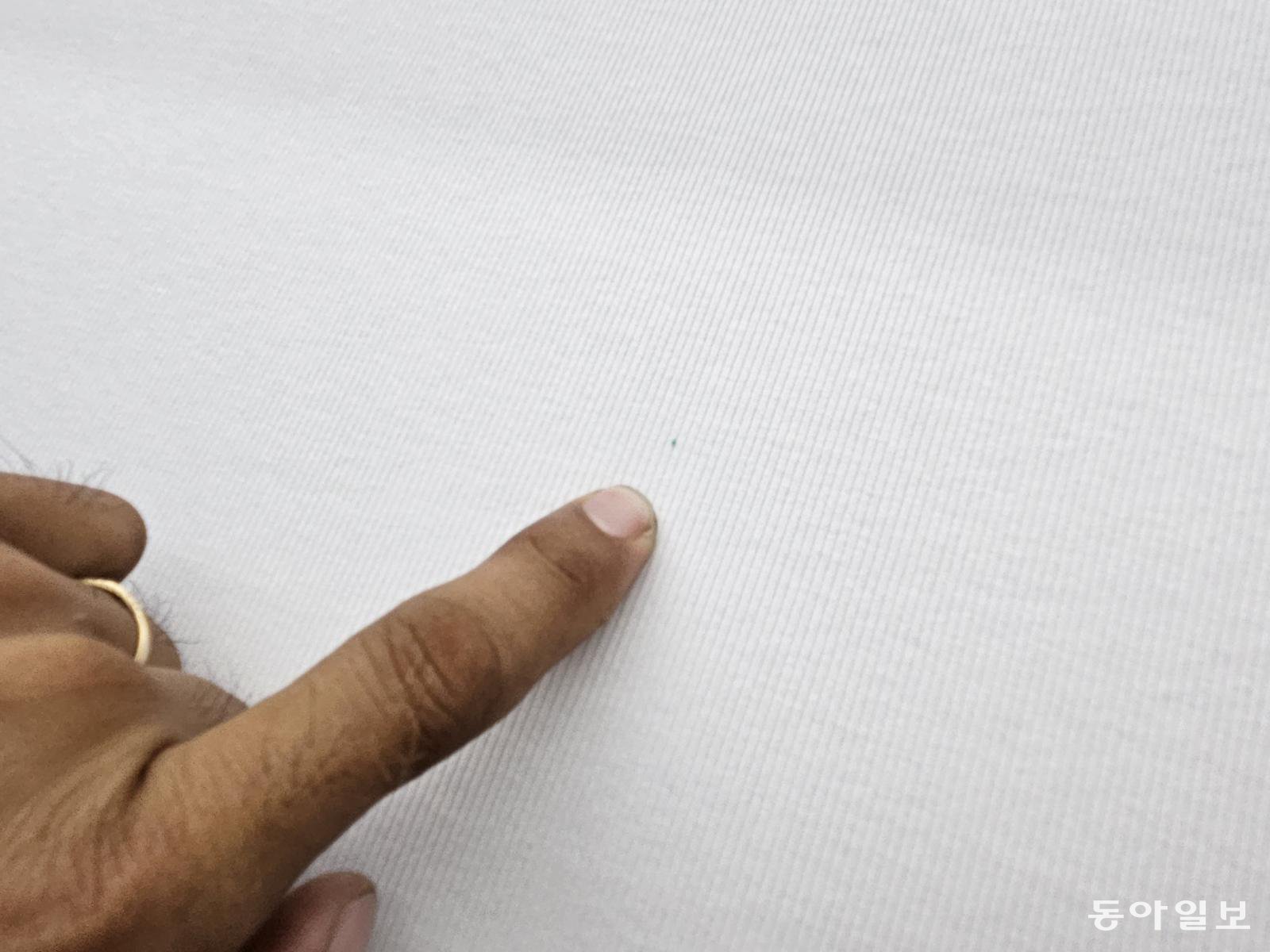“This machine can instantly detect even the tiniest defects that are invisible to the human eye.”
On the 30th of last month, inside Hansae Co., Ltd.'s C&T VINA 3 factory in Binh Phuoc Province, Vietnam. Nguyen Van Dai, 27, the developer of this machine's technology, introduced the AI fabric defect inspection device that Hansae has implemented on a trial basis, stating this.
On this day, the machine inspected a 285-meter fabric in just over two minutes, detecting a total of 113 defects. The majority of these were misprints about the size of dust, which are difficult to detect with the naked eye. He explained, “Inside, there are eight camera sets, and the sensors within detect defects,” adding, “The sensors consistently identify issues like contamination or printing defects that are hard for humans to see.”
Hansae announced on the 3rd that it plans to actively introduce such 'smart equipment' at its vertically integrated factory in Guatemala, which is set to operate in the third quarter of 2026 (July to September) to mitigate U.S. tariff risks.
The factory in Michatoya, Guatemala, will be a vertically integrated facility encompassing yarn, fabric, and sewing. The total site area is 500,000 square meters, with an investment of $300 million (KRW 428.6 billion). The plan is to initially expand 160,000 square meters by 2027 and further expand by 2028. The production volume starting from the third quarter of 2026 (July to September) will be approximately 30,000 kg of synthetic fibers and 10,000 kg of cotton per day based on dyeing. Once completed, the facility will be able to dye up to 70,000 kg per day (50,000 kg of synthetic fibers, 20,000 kg of cotton).
Hansae's active investment in Guatemala is driven by the expectation of achieving a 'two birds with one stone' effect by reducing both tariffs and lead times. Kim Young-jo, Director of C&T Central America Business Strategy, explained, “The mutual tariff rate between Guatemala and the U.S. is about 10%, relatively lower than Vietnam's 20%,” adding, “Recently, there has been an increase in determining colors and styles based on market conditions, leading to buyer demands for nearshoring.” Shipping from Guatemala to the U.S. can reduce lead time by six weeks compared to the maximum 11 weeks required from Asia.

The Guatemala factory is expected to primarily produce activewear such as yoga and running clothes made from synthetic fibers. The challenge is labor costs, which are higher in Guatemala compared to Vietnam. In response, Hansae is considering simplifying designs to facilitate mass production. To this end, they plan to actively implement AI systems in the quality control (QC) process, similar to those trialed at the Vietnam C&T 3 factory. A Hansae official stated, “In Guatemala, we plan to utilize AI for final product inspections,” adding, “We also intend to establish an automated system for packaging and shipping fabrics using robots.”
Kim Ik-hwan, Vice Chairman of Hansae Co., Ltd., stated, “We believe that bold investments in Latin America can lay the foundation for increased sales and growth potential in the coming years,” adding, “We will build sustainable growth through vertical integration, strengthening the digital supply chain, and utilizing AI technology for a digital eco-friendly supply chain.”
ⓒ dongA.com. All rights reserved. Reproduction, redistribution, or use for AI training prohibited.
Popular News
